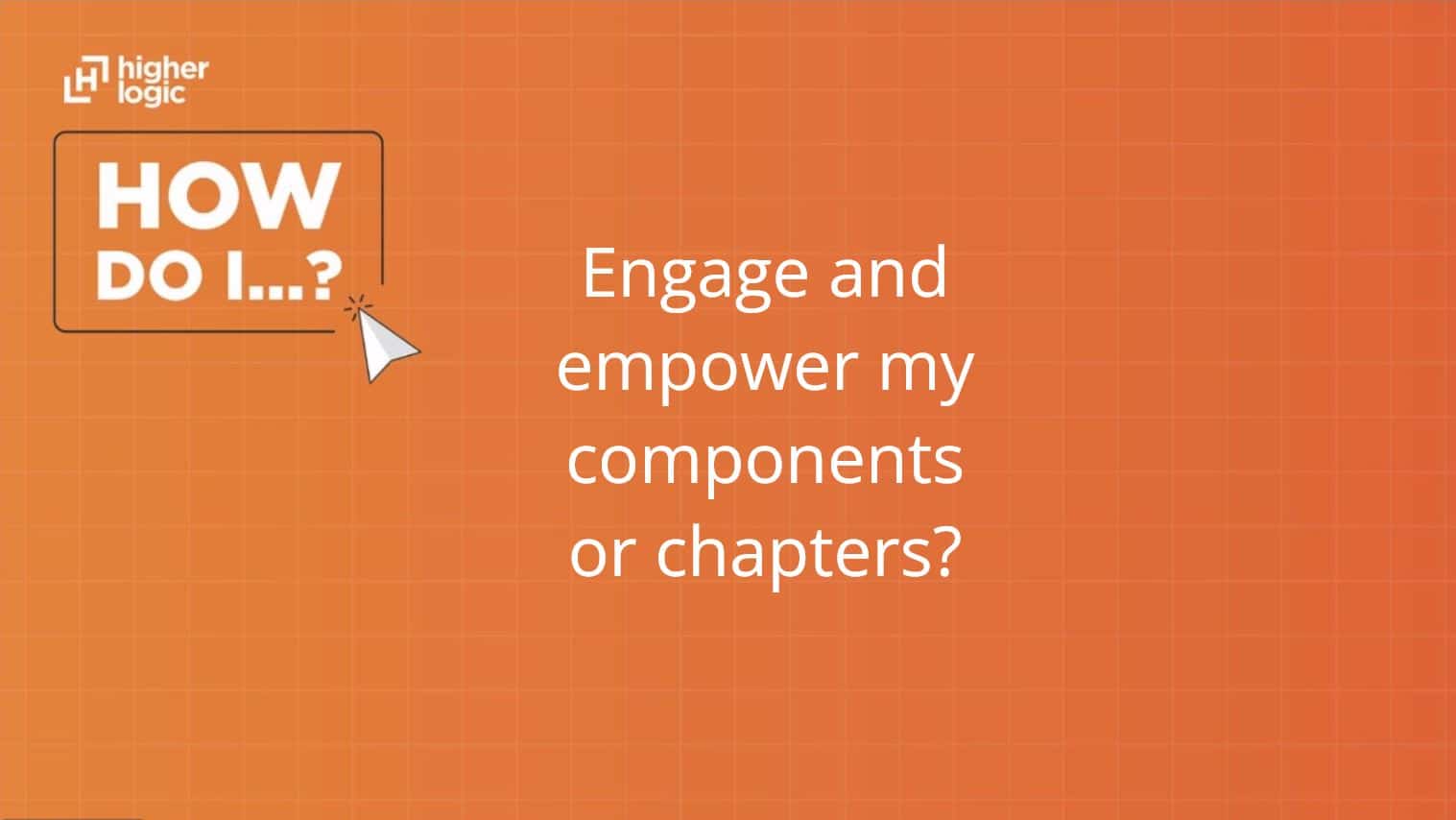
Creating Engaging Microsite Experiences for Associations and Their Members
Breaking down and managing subgroups of members helps you personalize the member experience and highlight relevant content.
Managing and engaging various segments of an association’s membership can be a daunting task, especially when it involves multiple groups like chapters. On a recent episode of The Member Engagement Show podcast, I invited my colleagues Kristen Parody and Cate Sauer to stop by and share their expertise on how associations use Higher Logic’s Component Management add-on to create microsites, and how to do it effectively.
Kristen, a Senior Advisor on the Success Team has been with Higher Logic since 2020. Cate Sauer is a Customer Success Manager and works closely with membership managers to ensure their success. Both Kristen and Cate – like me – were previously Higher Logic customers working at associations and nonprofits.
Together, they offered some valuable insights into effective component management strategies.
What Is Component Management?
Higher Logic’s Component Management Add-On allows associations to give member groups their own personalized space their community. Many associations use it to easily enable chapters, sections, groups, and events.
In practice, the tools available through Component Management allow associations to do things like:
- Give chapters special tools they can use to manage and engage their own groups. This includes features to help manage different groups with permissions.
- Empower volunteer leaders with the resources they need to engage their groups or subcommunities – the association can share or keep as much control as they’d like over permissions, communication, tracking, etc.
- Create microsites or nested communities with their own specialized design different (if desired) from the association’s main community or website. With microsites, you can give a sub-group of the membership or an event its own unique URL, identity, and branding.
- Example: Higher Logic has a main online community site, the Higher Logic Users Group (HUG), but we create a special site for our annual Super Forum Conference, with branding specifically for that event.
- Example: Maybe you want different subcommunities for different chapters of your organization, each with design elements personalized to their region or focus.
- Tailor their emails or automated marketing campaigns to different components or chapters. Integrations with the association’s AMS or online community make it easy to add and segment lists and pre-built email templates streamline effort.
How Associations are Using Microsites and Component Management
There are multiple reasons an association might want to stand up microsites, such as creating spaces for:
- Special interest groups within the membership
- Regional chapters
- State chapters
- Local chapters
- Unique campaign initiatives
- Advocacy initiatives
- Education initiatives
- Foundation work
- Demographic interest groups
- Conferences and events
You should also keep in mind that these microsites can have their own nested communities that operate as a subset of the overall association community.
It’s important to think about the impact of managing multiple sites for your organization, but Kristen and Cate shared tips for how to keep the work manageable. And Component Management is designed to make it easy to create and run these highly desirable, exclusive digital spaces – and enable volunteer leaders (like chapter or group leaders) to help you by giving them some control (without giving up your association’s ultimate oversight and design selections).
How to Know if a Microsite is a Success
To gauge the effectiveness of your Component Management Program and microsites, keep an eye on the following metrics:
- Page View and Engagement Statistics: Track how often users interact with different components on your sites. This data helps you understand which elements are most engaging and which need rethinking.
- Google Analytics: Make sure to use Google Analytics to gain insights into user behavior on your microsites. You’ll get valuable data on visitor traffic, user engagement, and conversion rates.
- Goal-Oriented Measurement: You must understand the different goals for your different microsites – they may be the same, but they might be different. Keep in touch with microsite “leaders” on the specific goals for each site and measure success based only on those objectives. Is it to increase event registrations? Develop more volunteers? Get people to sign up for a certification? Moving toward those targets are really the only thing that matters. And know that not every microsite will have the same success metrics.
Give member groups their own personalized space in your community with Component and Chapter solutions. Easily enable chapters, sections, groups, or components at scale.
One Platform with Qualified Success Experts
Your best path to microsite and sub-group success is to create and run those microsites through one system. Using Higher Logic’s Component Management Add-On can help you avoid having multiple different vendors for all your different sites.
As Kristen called out from an example from one of our customers, “With Florida Makes, I know they had so many different sites that were run on different platforms. I think one was running on WordPress, one was on Squarespace, and several other platforms out there. So when they were able to take all those and get them housed under ONE platform with Higher Logic Thrive and Component Management that made things far more sustainable from a technical standpoint.” (Watch the Florida Makes case study).
And, as Kristen and Cate shared, you also get access to an expert success team to help with implementing it, optimizing it, learning it, and making it run like the seamless machine you want it to be. “With ongoing strategic assistance from Higher Logic you can learn from us because we’ve figured out ‘hey, this is the better route to go’ because we’ve seen it not work as well with other people,” said Kristen.
And, in the end, making things easier for your staff results in making things easier for your members; and they’re who it’s all about.
Related Resources
How do I engage and empower my components?
Are you unsure of how to provide your association chapters, components, or groups with the right information, just for them?...
Read MoreAdvisor Webinar: A Case Study of Migrating Association Content + Website
Date: July 16, 2024
Amanda Starling, Director of Strategic Partnerships from FloridaMakes, and Cate Sauer, Customer Success Manager at Higher Logic discuss how FloridaMakes...
Watch Now





